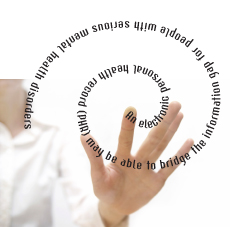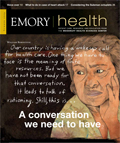Technology for mental health
 Ben Druss is evaluating the use of an electronic personal health record tailored for mental health care among at-risk populations. |
Each year, unknown numbers of people with severe mental health disorders get lost in the health care system.
When in need of treatment, many find themselves on a Ferris wheel of rotating doctors and nurse practitioners. They often are unable to relay important information about their health history to providers, who in turn are challenged with coordinating treatments and medications.
An electronic personal health record (PHR) may be able to bridge the information gap for people with serious mental health disorders, says Emory public health expert Benjamin Druss. PHRs are available to anyone through the Internet—Google, Microsoft, and the American Health Information Management Association all offer PHRs.
"PHRs are on the cutting edge now, but 10 years from now everyone will have one," says Druss, the Rosalynn Carter Chair of Mental Health at Emory's Rollins School of Public Health. "They are part of a broader push toward information technology within health care. Even President Obama has proposed using electronic resources and improving records as part of his health plan."
Typically, electronic records have been maintained by a hospital or doctor rather than by patients. But Druss sees an opportunity to use these records to empower mental health patients through technology.
He is leading a pilot study to evaluate the use of a PHR tailored for mental health care among at-risk populations. Such patients typically exhaust their private health insurance benefits or cannot work. They are commonly treated at community mental health clinics or public hospitals, which often means multiple providers and paper records that are lost or incomplete.
Druss has altered the Shared Care Plan, a PHR widely used in the Seattle area, to allow for entry of more medication information as well as an advanced mental health directive identifying the person the patient wants to make treatment decisions in the case that he or she is unable to do so. Patients carry a card to alert clinicians about their disorder and the existence of their PHR. Patients are assigned a clinical care specialist to help them complete a password-protected PHR and to teach them how to find and use computers in their communities. The PHR also sends frequent reminders about upcoming appointments.
The goal, Druss says, is to make the mental health PHR as user-friendly as possible for the 18 million people in the United States who have a serious mental disorder. —Kay Torrance


